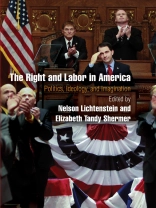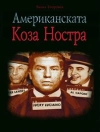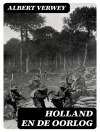The legislative attack on public sector unionism that gave rise to the uproar in Wisconsin and other union strongholds in 2011 was not just a reaction to the contemporary economic difficulties faced by the government. Rather, it was the result of a longstanding political and ideological hostility to the very idea of trade unionism put forward by a conservative movement whose roots go as far back as the Haymarket Riot of 1886. The controversy in Madison and other state capitals reveals that labor’s status and power has always been at the core of American conservatism, today as well as a century ago.
The Right and Labor in America explores the multifaceted history and range of conservative hostility toward unionism, opening the door to a fascinating set of individuals, movements, and institutions that help explain why, in much of the popular imagination, union leaders are always ‘bosses’ and trade union organizers are nothing short of ‘thugs.’ The contributors to this volume explore conservative thought about unions, in particular the ideological impulses, rhetorical strategies, and political efforts that conservatives have deployed to challenge unions as a force in U.S. economic and political life over the century. Among the many contemporary books on American parties, personalities, and elections that try to explain why political disputes are so divisive, this collection of original and innovative essays is essential reading.
表中的内容
Introduction. Entangled Histories: American Conservatism and the U.S. Labor Movement in the Twentieth and Twenty-First Centuries
—Nelson Lichtenstein and Elizabeth Tandy Shermer
I. THE CONSERVATIVE SEARCH FOR SOCIAL HARMONY
Chapter 1. Unions, Modernity, and the Decline of American Economic Nationalism
—Andrew Wender Cohen
Chapter 2. The American Legion and Striking Workers During the Interwar Period
—Christopher Nehls
Chapter 3. Democracy or Seduction? The Demonization of Scientific Management and the Deification of Human Relations
—Chris Nyland and Kyle Bruce
II. REGION, RACE, AND RESISTANCE TO ORGANIZED LABOR
Chapter 4. Capital Flight, ‘States’ Rights, ‘ and the Anti-Labor Offensive After World War II
—Tami J. Friedman
Chapter 5. Orval Faubus and the Rise of Anti-Labor Populism in Northwestern Arkansas
—Michael Pierce
Chapter 6. ‘Is Freedom of the Individual Un-American?’ Right-to-Work Campaigns and Anti-Union Conservatism, 1943−1958
—Elizabeth Tandy Shermer
III. APPROPRIATING THE LANGUAGE OF CIVIL RIGHTS
Chapter 7. Singing ‘The Right-to-Work Blues’: The Politics of Race in the Campaign for ‘Voluntary Unionism’ in Postwar California
—Reuel Sc hiller
Chapter 8. Whose Rights? Litigating the Right to Work, 1940-1980
—Sophia Z. Lee
Chapter 9. ‘Such Power Spells Tyranny’: Business Opposition to Administrative Governance and the Transformation of Fair Employment Policy in Illinois, 1945−1964
—Alexander Gourse
IV. THE SPECTER OF UNION POWER AND CORRUPTION
Chapter 10. Pattern for Partnership: Putting Labor Racketeering on the Nation’s Agenda in the Late 1950s
—David Witwer
Chapter 11. ‘Compulsory Unionism’: Sylvester Petro and the Career of an Anti-Union Idea, 1957−1987
—Joseph Mc Cartin and Jean-Christian Vinel
Chapter 12. Wal-Mart, John Tate, and Their Anti-Union America
—Nelson Lichtenstein
Chapter 13. ‘All Deals Are Off’: The Dunlop Commission and Employer Opposition to Labor Law Reform
—John Logan
Chapter 14. Is Democracy in the Cards? A Democratic Defense of the Employee Free Choice Act
—Susan Orr
Notes
List of Contributors
Index
关于作者
Nelson Lichtenstein is Mac Arthur Foundation Chair in History at the University of California, Santa Barbara, and the editor of American Capitalism: Social Thought and Political Economy in the Twentieth Century, also available from the University of Pennsylvania Press. Elizabeth Tandy Shermer teaches history at Loyola University Chicago and is author of Sunbelt Capitalism: Phoenix and the Transformation of American Politics, also available from the University of Pennsylvania Press












